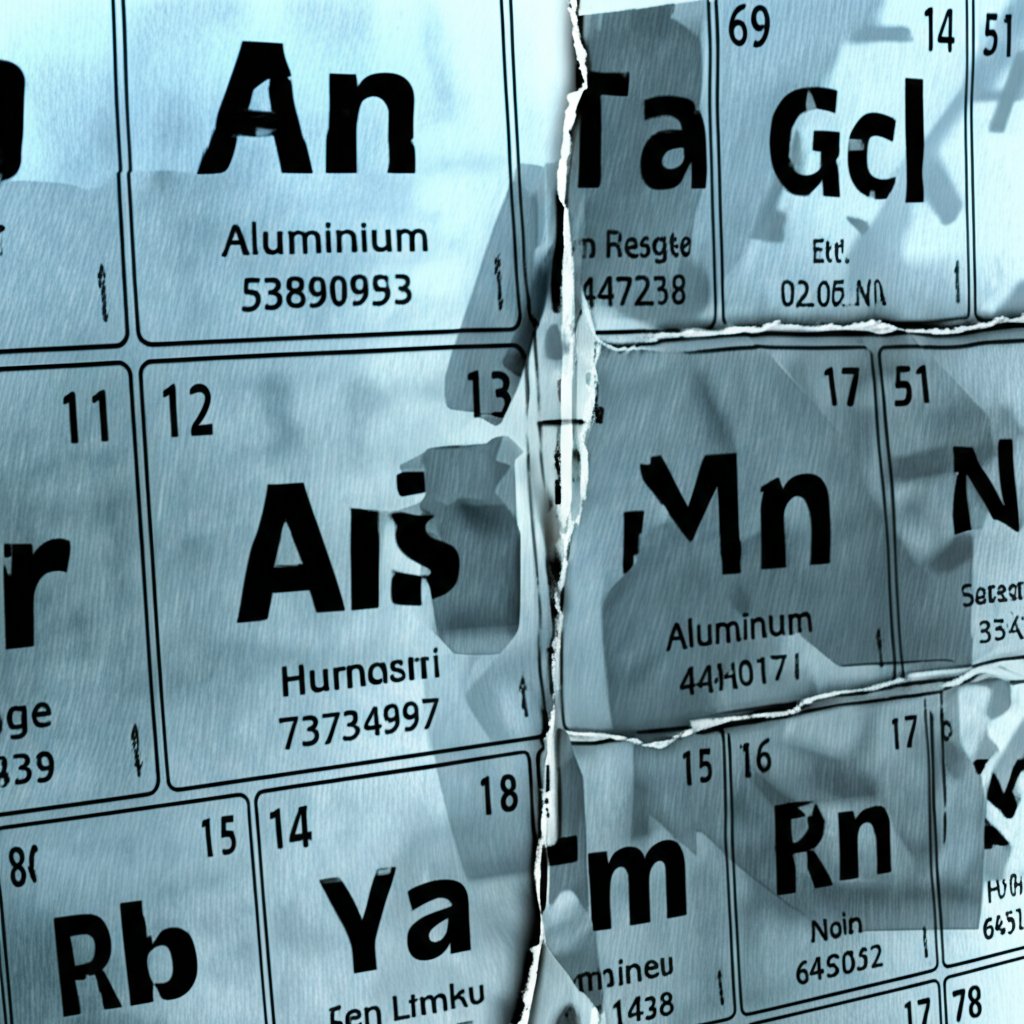
Have you ever wondered why some people say aluminium while others insist on aluminum? If you’ve spotted both spellings on packaging, in textbooks, or online, you’re not alone. The difference between aluminium and aluminum is a classic example of how language evolves—and how it can spark curiosity and confusion in equal measure.
At the heart of this debate is a single chemical element: symbol Al, atomic number 13. Whether you call it aluminium or aluminum, you’re referring to the same lightweight, silvery-white metal found in soda cans, kitchen foil, airplane parts, and countless everyday products. But why do two different names exist for one element?
This divergence is more than a simple spelling quirk. It reflects centuries of scientific discovery, regional language preferences, and even efforts to standardize chemistry terminology. While both terms are scientifically correct and widely recognized, the choice between them often depends on where you live—or whom you’re speaking to.
In this article, we’ll unravel the difference between aluminium and aluminum. You’ll learn:
By the end, you’ll know exactly when and where to use each term—and why this small difference continues to spark such big curiosity around the world. [Source]
Ever noticed "aluminum" on a soda can but "aluminium" in a science textbook? Sounds confusing, right? When you see these two spellings, you might wonder if they refer to different materials. In reality, both aluminum spelling and aluminium spelling point to the same element—an essential, lightweight, silvery-white metal with the symbol Al and atomic number 13.
The difference between these spellings isn’t about the metal itself, but about language and history. Over time, two versions emerged, each favored by different regions. Here’s a quick breakdown:
Both terms are accepted in scientific communities, and you’ll find them used interchangeably in academic writing and industry, depending on the country or region. The reason for the two spellings traces back to early 19th-century naming debates and regional adoption—a story we’ll explore in detail in the next section. For now, just remember: whether you see "aluminum" or "aluminium," it’s the same versatile metal at work in your daily life. [Source]

When you hear someone say "aluminum" or "aluminium," do you notice the subtle difference in sound? It’s more than just spelling—the way each word is pronounced often reveals where the speaker is from. Let’s break down the distinct aluminum pronunciation and aluminium pronunciation so you’ll never be caught off guard in conversation or the classroom.
Imagine you’re in a chemistry class in the US: you’ll hear "aluminum" spoken as uh-LOO-muh-num (four syllables). Cross the Atlantic to the UK or Australia, and you’ll likely hear "aluminium" as al-yoo-MIN-ee-um (five syllables). The extra "i" in "aluminium" adds an extra syllable and shifts the stress, making the word sound more elaborate and, to some, more scientific.
| Spelling | Pronunciation (IPA) | Syllables | Common in |
|---|---|---|---|
| Aluminum | /əˈluːmɪnəm/ | 4 | United States, Canada |
| Aluminium | /ˌæljuːˈmɪniəm/ | 5 | United Kingdom, Australia, International |
So, why does this matter? Pronunciation typically matches the regional spelling, and using the local version helps ensure clear communication. For example, if you’re reading a British science paper or speaking with colleagues in Australia, "aluminium" is expected. In American classrooms and industries, "aluminum" is the norm. This subtle difference can even impact how educational resources are understood around the world, as noted by linguistic and scientific studies [Source].
The next time you encounter either version, you’ll not only spot the spelling difference but also appreciate how pronunciation helps connect language, culture, and science. Up next, we’ll explore the fascinating history behind these names—and how a single element ended up with two global identities.

Ever wondered who discovered aluminum—and how its name took so many twists and turns? The history of aluminum name is a fascinating tale of scientific discovery, language evolution, and a dash of international rivalry. Let’s break it down so you can see exactly how this everyday metal ended up with two different names.
Our story begins in the early 1800s with Sir Humphry Davy, a British chemist known for his groundbreaking work in electrochemistry. In 1808, Davy was investigating substances related to alum, a mineral compound used for centuries in dyeing and tanning. He theorized that this compound contained a new, undiscovered metal. When Davy first proposed a name for this element, he called it alumium—a nod to its origins in alum and a structure similar to other element names he was coining at the time, such as silicium and zirconium (Merriam-Webster).
Sounds complex? It’s about to get even more interesting. Shortly after his initial proposal, Davy reconsidered the name. By 1812, he had revised his term to aluminum. This new version dropped the "-ium" ending in favor of a shorter, more streamlined form. Davy’s change reflected a broader trend in early 19th-century chemistry, where element names were still being standardized and scientists experimented with different suffixes.
But the story doesn’t end there. Around the same time, other scientists and editors in Britain wanted the new element’s name to fit the classical Latin style adopted for other elements. Many elements discovered around that period, such as potassium and sodium (both also named by Davy), ended with "-ium." To maintain consistency and a sense of scientific gravitas, British chemists began using aluminium, adding an extra "i" to echo the Latin pattern (University of Houston).
The result? Two spellings, each with its own logic. "Aluminum" reflected Davy’s push for simplicity, while "aluminium" fit the established convention for naming metals. Over time, these different versions became entrenched on either side of the Atlantic.
Understanding this naming journey helps explain why, even today, textbooks, packaging, and scientific papers might use different terms for the same element. Next, let’s see which spelling actually came first—and how each term found its place in history.
When you dive into the aluminum vs aluminium history, you might wonder: which came first, aluminum or aluminium? The answer is surprisingly clear once you trace the sequence of naming decisions in the early 19th century.
So, aluminum actually came first in print, but aluminium was adopted soon after to align with scientific naming conventions. While Americans stuck with Davy’s shorter version, the international scientific community gravitated toward the Latinized form.
Today, both names are correct, but their usage is shaped by historical choices and regional preferences. Understanding this timeline helps you see why the two spellings coexist—and sets the stage for how each became the norm in different parts of the world.

When you walk through an American hardware store or read a U.S. science textbook, you’ll notice one thing: the spelling “aluminum” is everywhere. But why did this version take hold in America, and how does it shape industry and daily life?
Imagine you’re living in the early 1900s. The metal was gaining popularity, and people needed a consistent way to spell its name. American dictionaries, most notably Noah Webster’s 1828 edition, favored the streamlined “aluminum” spelling, dropping the extra “i” found in the British “aluminium.” This preference wasn’t just a quirk—it spread rapidly, especially as the American Chemical Society officially adopted "aluminum". As a result, “aluminum” became the go-to term across U.S. education, industry, and commerce.
Today, aluminum in America is an industrial powerhouse. From soda cans and kitchen foil to aircraft frames and skyscraper windows, this metal’s lightweight strength and corrosion resistance make it indispensable. The U.S. has a long history as a global leader in aluminum production, with major companies like Alcoa and Century Aluminum shaping the market. Although primary production has declined in recent decades, the U.S. remains a hub for secondary (recycled) aluminum—accounting for 78% of production by 2021 (Wikipedia). This focus on recycling supports sustainability and keeps aluminum products widely available.
As demand for high-quality aluminum profiles grows, manufacturers tailor their communications and products to North American standards. Leading companies, such as Shengxin Aluminum, use the “aluminum” spelling in their North American materials and work to meet precise U.S. requirements for strength, finish, and sustainability. This approach ensures that architects, engineers, and manufacturers across the continent receive aluminum profiles that fit their exact needs—whether for energy-efficient windows, advanced vehicles, or large-scale infrastructure projects.
Understanding why “aluminum” dominates in America helps you navigate technical documents, product labels, and industry communications with confidence. Next, let’s see how the rest of the English-speaking world landed on “aluminium”—and what that means for international standards and collaboration.
Ever wondered why you spot "aluminium" on packaging in the UK, Australia, or New Zealand, but rarely in North America? The story behind aluminium in UK and its adoption as the aluminium international standard is rooted in scientific tradition, linguistic consistency, and global cooperation. Let’s break down how this spelling became the norm across much of the English-speaking world—and why it matters in science and industry.
Imagine you’re reading a British science journal or shopping for cookware in London. You’ll notice that “aluminium” is the only spelling in use. This isn’t just a matter of national pride—it’s a deliberate choice shaped by the British scientific community. In the early 19th century, as chemists sought to standardize element names, British scientists favored the "-ium" ending, aligning with other metals like sodium, calcium, and potassium. This approach gave the name a classical, Latin-inspired feel and matched the conventions of the time (Merriam-Webster).
But how did this regional preference become a global norm? The answer lies with the International Union of Pure and Applied Chemistry (IUPAC). In 1990, IUPAC officially adopted "aluminium" as the international standard name for the element, citing its alignment with other element names and widespread use outside North America. This decision reinforced “aluminium” in scientific literature, international conferences, and global collaborations (Merriam-Webster). However, IUPAC later recognized “aluminum” as an acceptable variant, but “aluminium” remains the preferred term in most international scientific contexts.
This global consensus helps avoid confusion in cross-border research, manufacturing, and trade. When you encounter “aluminium” in international documents, you can be confident it’s the same element as “aluminum”—just spelled in line with international and British conventions.
Next, let’s explore how Canada and Australia navigate these naming conventions—and what that means for industry and education in each country.
When you travel or do business internationally, you might wonder: is it "aluminum or aluminium" in Canada? And what about Australia? The answer reveals how geography and cultural ties shape the words we see on packaging, in classrooms, and across industries.
Canada: If you pick up a soda can or read a science book north of the U.S. border, you’ll almost always see the American spelling—aluminum. This isn’t a coincidence. Canadian English has been heavily influenced by American spelling conventions, especially for scientific and industrial terms. As a result, "aluminum" dominates in Canadian media, education, and manufacturing. However, you might occasionally spot "aluminium" in older texts or in contexts where British English has a strong presence, such as academic writing or imported products. Still, the American version is the clear favorite in daily Canadian usage (Merriam-Webster).
Australia: Now, imagine you’re shopping for kitchenware or reading a science textbook in Sydney or Melbourne. Here, the answer is simple: "aluminium" is the only accepted spelling. Australia follows British English standards closely, so from primary school to professional engineering documents, "aluminium" is the norm. You’ll rarely, if ever, see "aluminum" in Australian publications or product labels (Australian Writers’ Centre).
So, next time you’re unsure which spelling to use, consider your audience and location. These regional preferences help keep communication clear—whether you’re in a Canadian lab or an Australian classroom. Up ahead, we’ll look at how these spelling choices appear in science and everyday products, and what that means for global industries.

Ever opened your kitchen drawer and wondered why the box says "aluminum foil" in one country but "aluminium foil" in another? Or noticed different spellings on the periodic table depending on where you are? These everyday encounters spotlight how the aluminum foil vs aluminium foil debate plays out in real life—and why it matters for science, industry, and global trade.
Imagine you’re looking at a periodic table in a US classroom: you’ll see "Aluminum (Al)." Cross the Atlantic or check an international science journal, and you’ll likely find "Aluminium (Al)" instead. This isn’t just a quirk—it's the result of formal decisions by scientific bodies:
The aluminum vs aluminium periodic table difference is a clear example of how global science balances tradition and regional norms. Both spellings are correct, but the choice depends on geography and audience.
Step into a supermarket, and you’ll see the spelling difference in action:
This pattern repeats across countless products: window frames, beverage cans, car parts, and even electronics. In the US, you’ll find "aluminum window frames" or "aluminum automotive components." In the UK or Australia, the same products are labeled "aluminium." Manufacturers must adapt to these preferences to ensure products resonate with local consumers and comply with regional regulations.
For companies serving international markets, flexibility is key. Leading manufacturers like Shengxin Aluminum recognize the importance of both spellings. They customize product labels, technical documents, and marketing materials to match local expectations—whether it’s "aluminum profiles" for North America or "aluminium profiles" for Europe and Asia. This adaptability helps ensure their high-quality profiles are trusted for everything from energy-efficient building facades to advanced transportation systems.
So, next time you reach for a roll of foil or spot the element Al on a periodic table, you’ll know there’s more to the name than meets the eye. These spelling choices reflect a world where language, science, and innovation are deeply intertwined—reminding us that even the simplest products can tell a global story. Up next, we’ll wrap up with practical advice on choosing the right term for your audience and a final look at why this versatile metal matters everywhere.
When it comes to aluminum or aluminium, which is correct? The answer is simpler than you might think: both are correct! The choice between these two spellings depends entirely on where you are and who you’re communicating with.
Why the split? It all traces back to the early 1800s, when chemist Sir Humphry Davy first proposed the name "aluminum," only for British scientists to quickly adapt it to "aluminium" for consistency with other element names. Over time, these preferences became firmly rooted in regional language and industry (Dictionary.com).
Ultimately, what matters most is clarity and respect for your audience’s expectations. Whichever term you use, you’re referring to the same versatile, lightweight metal that shapes everything from kitchen foil and soda cans to aircraft, vehicles, and cutting-edge technology.
Key takeaway: Both "aluminum" and "aluminium" are correct. Choose based on your audience and context.
And if you’re seeking an aluminum supplier who understands the importance of quality and global standards, consider trusted names like Shengxin Aluminum. Their expertise ensures you get the right profiles—no matter which spelling you prefer. The world may use different words, but the value and utility of this remarkable metal remain universal.
Both aluminum and aluminium are correct; the choice depends on regional language standards. Aluminum is used in the United States and Canada, while aluminium is standard in the UK, Australia, New Zealand, and most international scientific contexts. Both refer to the same element, symbol Al, atomic number 13.
The name aluminum was introduced first by Sir Humphry Davy in 1812, following his initial proposal of alumium. Shortly after, British scientists adopted the spelling aluminium to align with the naming of other elements. Both terms have coexisted since the early 19th century, with regional preferences developing over time.
In the United States, aluminum is the official and most widely used spelling. This version is seen in textbooks, product packaging, and industry standards, following the adoption by the American Chemical Society and American dictionaries.
The UK uses aluminium to maintain consistency with other element names ending in '-ium' and to reflect Latin naming conventions. This spelling was reinforced by British scientific communities and later by the International Union of Pure and Applied Chemistry (IUPAC) as the international standard.
Manufacturers like Shengxin Aluminum tailor their product labeling and communications to match regional preferences. For North America, 'aluminum' is used, while 'aluminium' appears in materials for the UK, Australia, and other international markets. This ensures clarity and compliance across global supply chains.
 Інтернет-сервіс
Інтернет-сервіс 0086 136 3563 2360
0086 136 3563 2360 sales@sxalu.com
sales@sxalu.com +86 136 3563 2360
+86 136 3563 2360